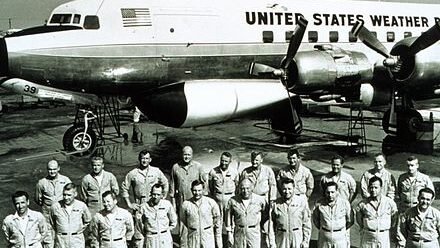Project Stormfury was an ambitious research program conducted by the United States from 1962 to 1983, aiming to weaken the destructive power of hurricanes. Spearheaded by the U.S. Weather Bureau and the Department of Defense, the project sought to explore whether cloud seeding—a process of dispersing substances like silver iodide into clouds—could disrupt the structure of hurricanes and reduce their intensity.
The idea behind the project was that by seeding the storm’s outer rainbands, it could trigger the formation of new clouds, diverting energy away from the hurricane’s eye wall and thus weakening the storm. Initial tests showed promising results, with researchers believing they had successfully reduced the strength of hurricanes in a few instances.
However, as the project progressed, scientists realized that many of the storms they seeded naturally lacked the characteristics needed for the process to work. Additionally, further research revealed that hurricanes undergo natural fluctuations in strength, making it difficult to determine whether the cloud seeding had any actual impact. By the early 1980s, Project Stormfury was discontinued, as advances in meteorology showed that hurricane modification was far more complex and less feasible than initially thought.
Though the project did not achieve its goal of controlling hurricanes, it significantly advanced the scientific understanding of these powerful storms and contributed to modern hurricane forecasting techniques.
See more….
